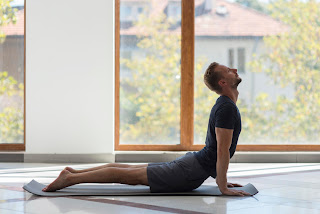10 Physiotherapy tips for Backpain.
Back pain is a prevalent condition that affects millions of people worldwide. It can significantly impact a person's daily activities and quality of life. It can range from mild discomfort to severe and debilitating pain, impacting daily activities, work productivity, and overall quality of life. Back pain can occur in different areas of the back, including the upper, middle, and lower regions, and may be accompanied by other symptoms like stiffness, muscle spasms, or radiating pain into the legs.
Physiotherapy is a branch of healthcare that focuses on restoring and maintaining physical function and mobility. When it comes to back pain, physiotherapy plays a crucial role in alleviating pain, improving posture, and enhancing overall spinal health. Through a combination of targeted exercises, manual therapies, and patient education, physiotherapists can help individuals manage and overcome back pain.
Here are ten physiotherapy tips that can be beneficial for individuals dealing with back pain:
If you have a sedentary job or lifestyle, take regular breaks from sitting. Get up, stretch, and move around every 30 minutes to avoid putting excessive stress on your back.
Maintain good posture: Poor posture can contribute to back pain. When sitting or standing, try to keep your back straight and aligned. Avoid slouching or hunching forward. Maintain a neutral spine position to reduce strain on your back. Ensure your workspace is ergonomically designed to support good posture. Use an adjustable chair with proper back support and position your computer monitor at eye level.
Stretch regularly: Stretching can help improve flexibility and reduce muscle tension in the back. Focus on stretching your hamstrings, hip flexors, and lower back muscles.
Use proper lifting techniques: When lifting heavy objects, use your legs instead of your back to lift, and keep the object close to your body. Avoid twisting while lifting.
Modify your sleeping position: Use a mattress and pillow that provide adequate support for your back. Avoid overly soft or sagging mattresses, as they may worsen your pain. Sleeping on your back with a pillow under your knees or on your side with a pillow between your legs can help reduce back pain.
Use heat or ice therapy: Applying heat or cold packs to the affected area can help reduce pain and inflammation.
Maintain good posture: Poor posture can contribute to back pain. When sitting or standing, try to keep your back straight and aligned. Avoid slouching or hunching forward. Maintain a neutral spine position to reduce strain on your back. Ensure your workspace is ergonomically designed to support good posture. Use an adjustable chair with proper back support and position your computer monitor at eye level.
Stretch regularly: Stretching can help improve flexibility and reduce muscle tension in the back. Focus on stretching your hamstrings, hip flexors, and lower back muscles.
Use proper lifting techniques: When lifting heavy objects, use your legs instead of your back to lift, and keep the object close to your body. Avoid twisting while lifting.
Modify your sleeping position: Use a mattress and pillow that provide adequate support for your back. Avoid overly soft or sagging mattresses, as they may worsen your pain. Sleeping on your back with a pillow under your knees or on your side with a pillow between your legs can help reduce back pain.
Use heat or ice therapy: Applying heat or cold packs to the affected area can help reduce pain and inflammation.
For acute back pain, you can use ice packs to reduce inflammation and numb the area. For chronic pain, heat therapy can help relax muscles and increase blood flow. Use a heating pad, warm towel, or an ice pack, depending on what provides you with more relief.
Exercise regularly: Engage in exercises that strengthen the muscles supporting your back, such as core exercises, stretching, and low-impact aerobic activities. Consult with a physiotherapist to determine the best exercises for your specific condition.
Practice relaxation techniques: Stress and tension can contribute to back pain. Engage in relaxation techniques such as deep breathing, meditation, or yoga to alleviate stress and promote relaxation.
Maintain a healthy weight: Excess weight can put strain on your back. Maintain a healthy weight through a balanced diet and regular exercise to reduce the load on your spine.
Seek professional help: If your back pain persists or is severe, seek help from a physiotherapist or other healthcare professional who can provide targeted treatment and advice for your specific condition.





%20-%202%20PCs%20(Buy%201%20Get%201%20Free)%20Random%20Color.jpg)







Comments
Post a Comment